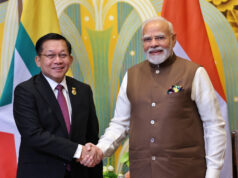The Indian government, led by Home Minister Amit Shah, has recently announced plans to erect a fence along the 1650 km-long India-Myanmar border. This border spans across four Indian states, namely Arunachal Pradesh, Nagaland, Manipur, and Mizoram. This proposed fencing project has stirred a significant debate, as it would potentially bring an end to the long-standing free movement regime that currently permits people from one side of the border to travel up to 16 km into the other side.
Mizoram and Nagaland have expressed strong opposition to the idea of fencing the border. Their resistance stems from the deep ethnic ties that exist between the people residing on either side of the border. The free movement has allowed these communities to maintain their cultural and familial connections, and they fear that a fence would disrupt this harmonious coexistence.
Contrarily, Manipur, another state along the border, has been grappling with ethnic violence for more than a year. This ongoing strife has left the local population in a state of insecurity and turmoil. As a result, Manipur has voiced its support for the construction of a fence, seeing it as a potential solution to stem the ethnic violence that has plagued the region.
The issue surrounding the India-Myanmar border is incredibly sensitive and complex. On one hand, there is a desire to preserve cultural ties and the free movement of people, which has been a longstanding tradition in the border areas. On the other hand, there is a pressing need for security and peace in regions like Manipur, where ethnic violence has taken a toll on the population.
As the government moves forward with its decision, it must carefully consider the various perspectives and potential consequences of fencing the border. Striking a balance between security concerns and the preservation of cultural and ethnic ties will be crucial in determining the ultimate fate of this contentious issue.
Related Content:




